My Role: UX Researcher | My Team: 1 Lead UX/UI Researcher + 1 UX/UI Designer Duration: 14 weeks
PROJECT OVERVIEW
DESCRIPTION
Come on up website is a start-up company booking website where they advertise their multiple houses for short and long-term co-living rentals for foreigners and Japanese residents.
PROBLEM
A major problem faced by the company was that it had created a website, but due to its poor usability, the company was not receiving enough inquiries from its website. Instead, most of their customers came from other third-party booking websites and social media platforms.
GOALS
SOLUTION
• I designed and helped generate a data-driven customer journey map that integrated the sales funnel to identify the pain points of the users when interacting with the website at each phase of the sales funnel
• I recommended redesigns for the website to adhere to design best practices and addressed user pain points from the original design
• I contributed to the creation of a landing page using data collected through user qualitative interviews and SEO keywords research to increase the international reachability and awareness of the company
PROJECT PROPOSAL TO STAKEHOLDERS
Example from our proposal presentation to stakeholders
• I proposed the idea that instead of changing the designs of the whole website, we first target English-speaking foreigners due to the new policy in Japan allowing digital nomad visas
• With this new visa policy, I predicted that there would be a new influx of foreigners, many of whom would require housing in Japan
• The Japanese house renting system is very complicated; hence, I came to the conclusion that improving the usability of the website and increasing brand awareness through SEO ranking will help reach this target audience and ultimately increase the business's sales
STANDALONE INITIAL DESIGN EVALUATION
Example of the Standalone design evaluation deliverable
• My team's lead UX researcher and I first identified the lack of consistency in the design and usability of the website catered toward English-speaking users.
• Due to time constraints, instead of a usability heuristics evaluation, I conducted a standalone initial design evaluation to highlight usability issues related to the website and delivered the results to my team's lead UX researcher, and they consulted the stakeholders.
Example of the Standalone design evaluation deliverable
UNDERSTANDING AND IDENTIFYING THE USERS' PROBLEM
User research was used to confirm and identify overlooked user behaviors, needs, and motivations for booking on the website after the initial design evaluation.
We conducted user research using the following methodologies:
* User Interview
* Survey
* Usability Testing
* CUSTOMER Journey Map
PLANNING THE RESEARCH
Before we started any user testing with the product and interviews, we brainstormed different questions to ask and came up with potential hypotheses for our questions.
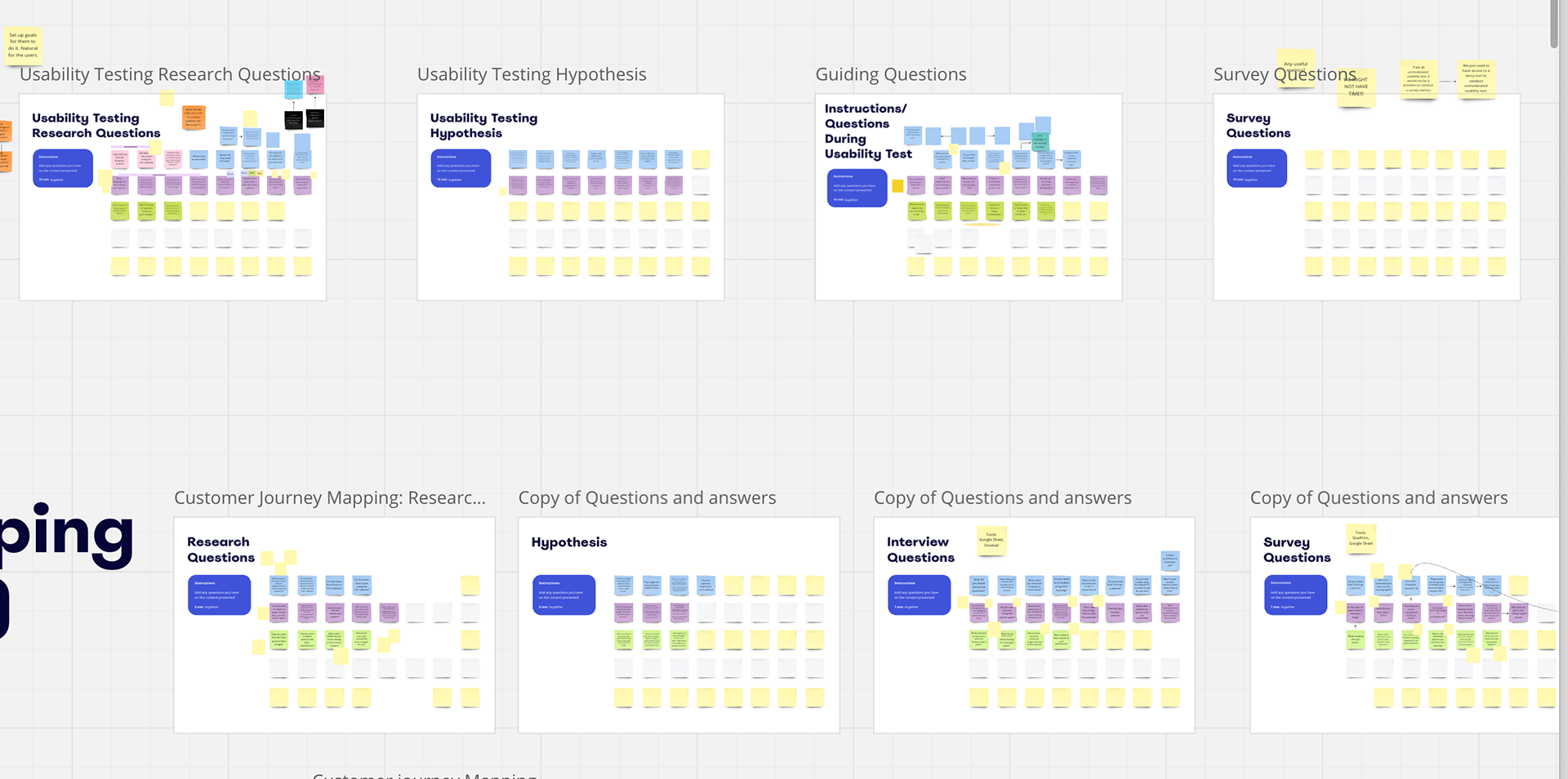
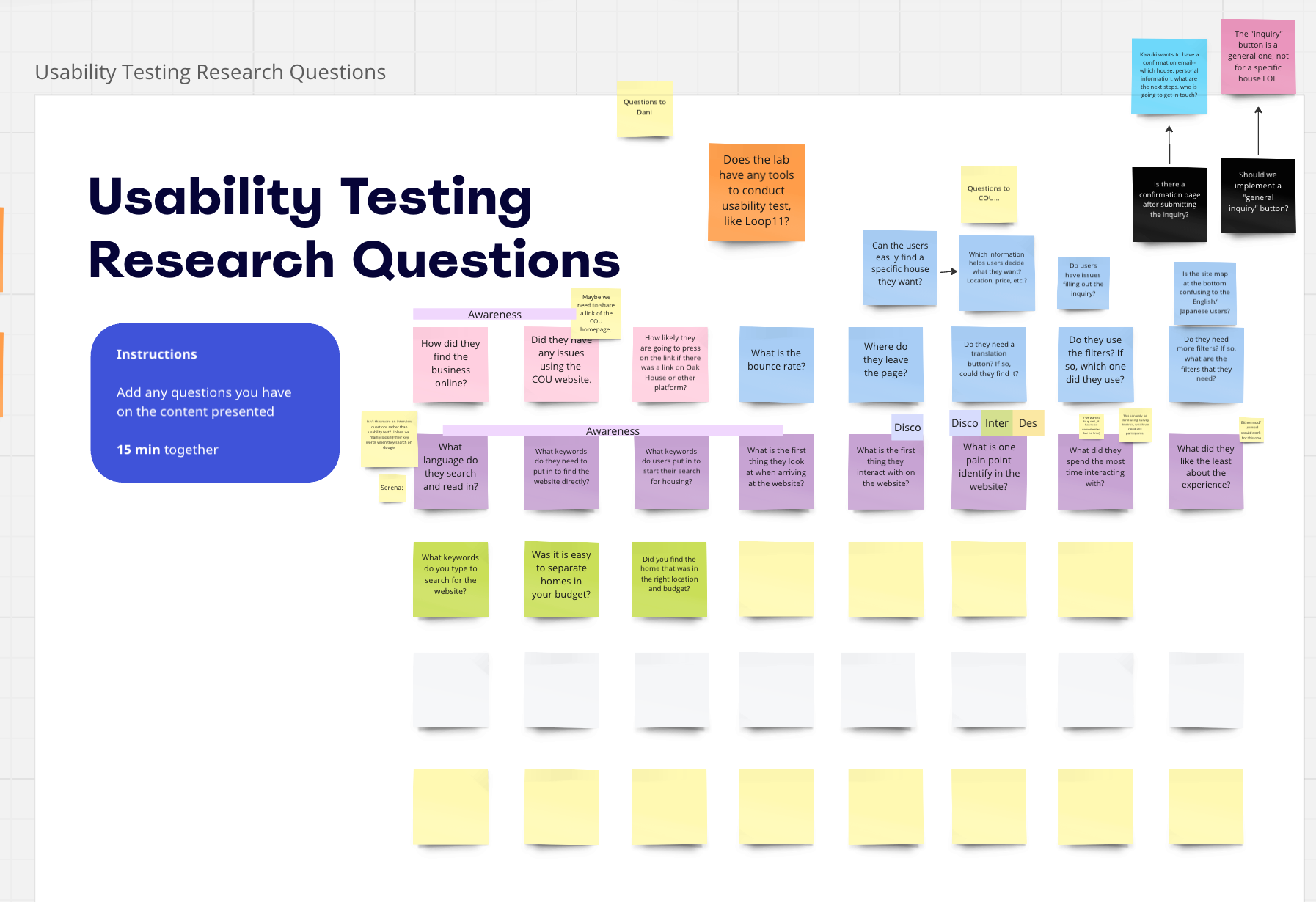
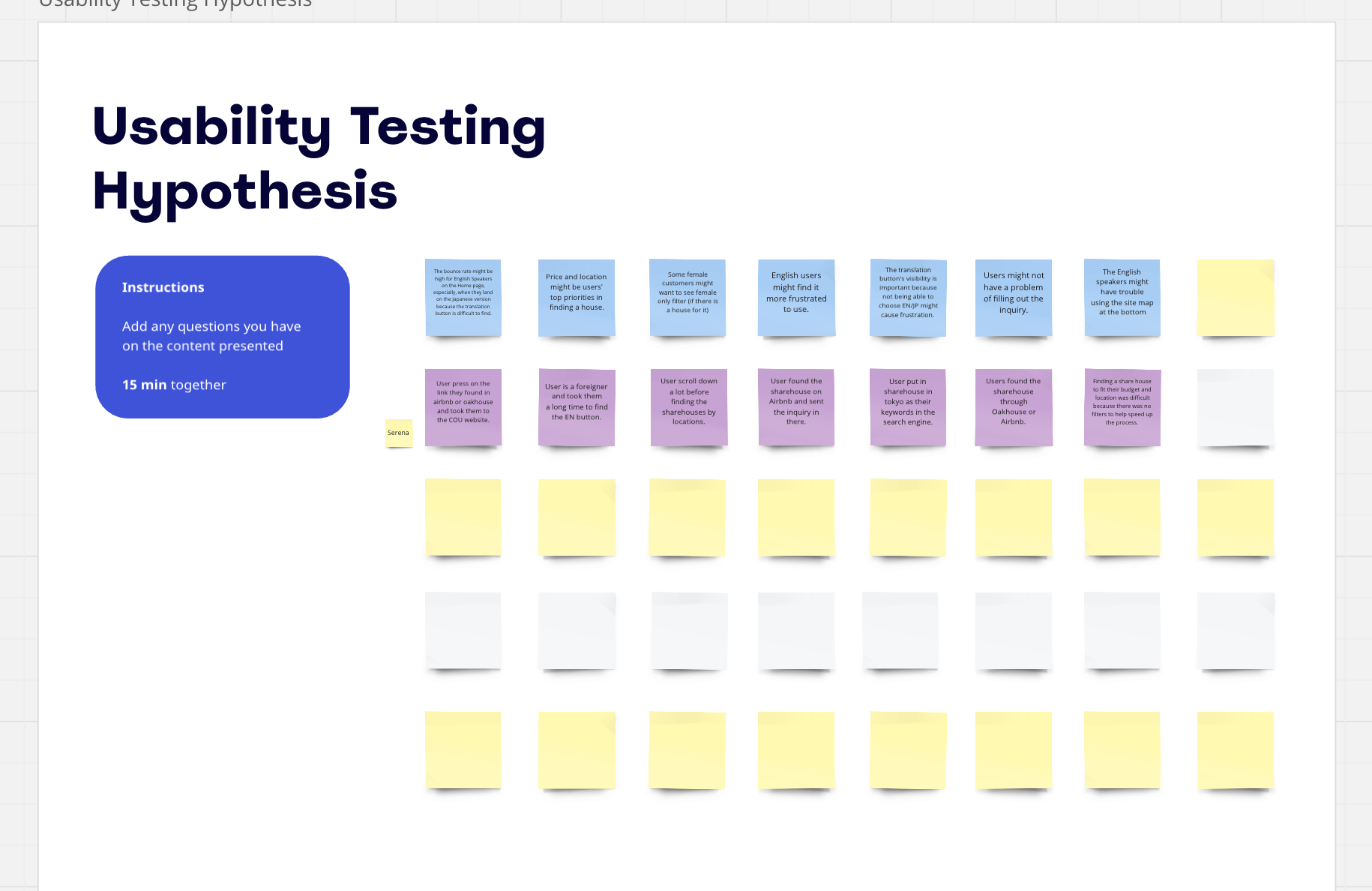
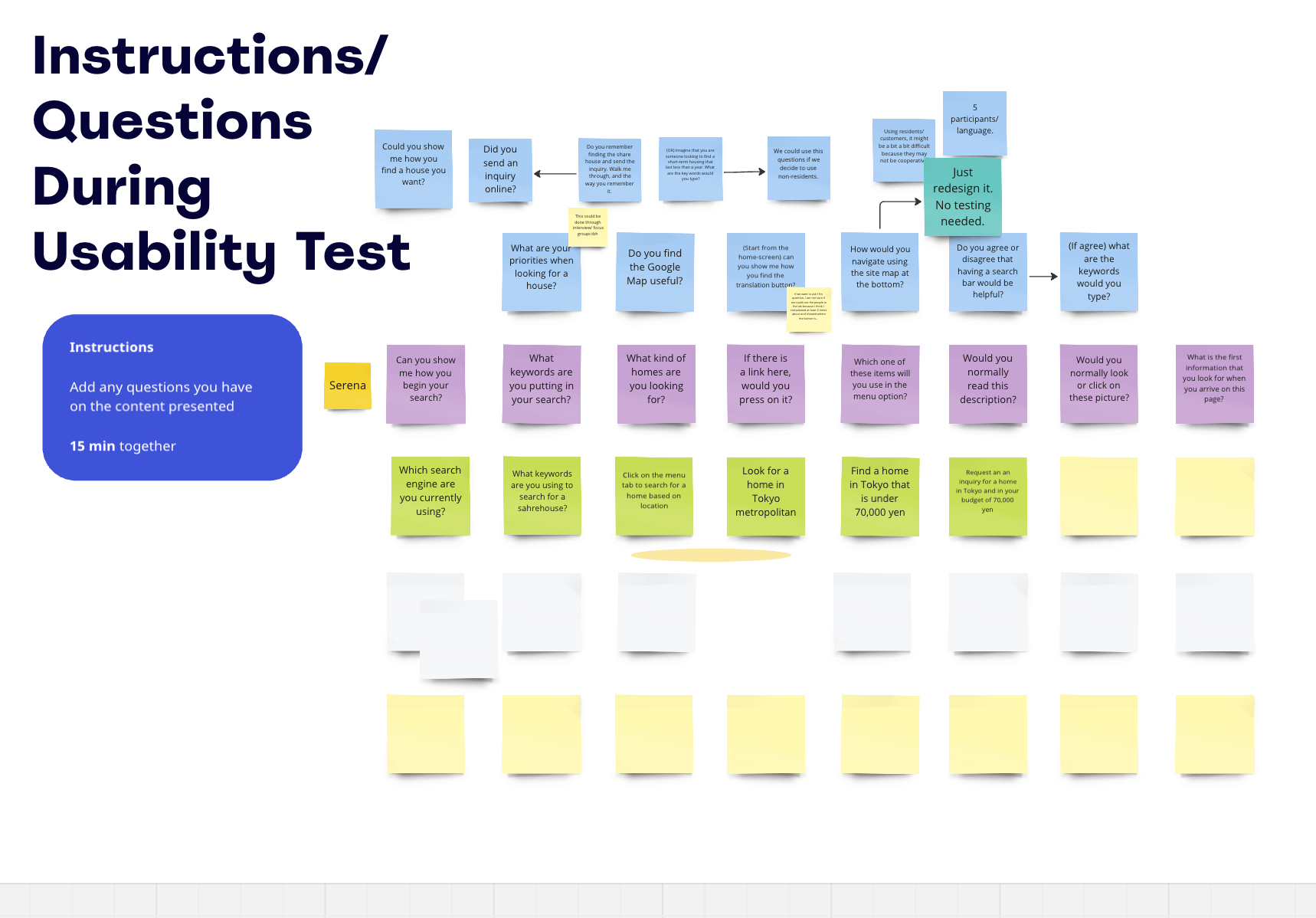
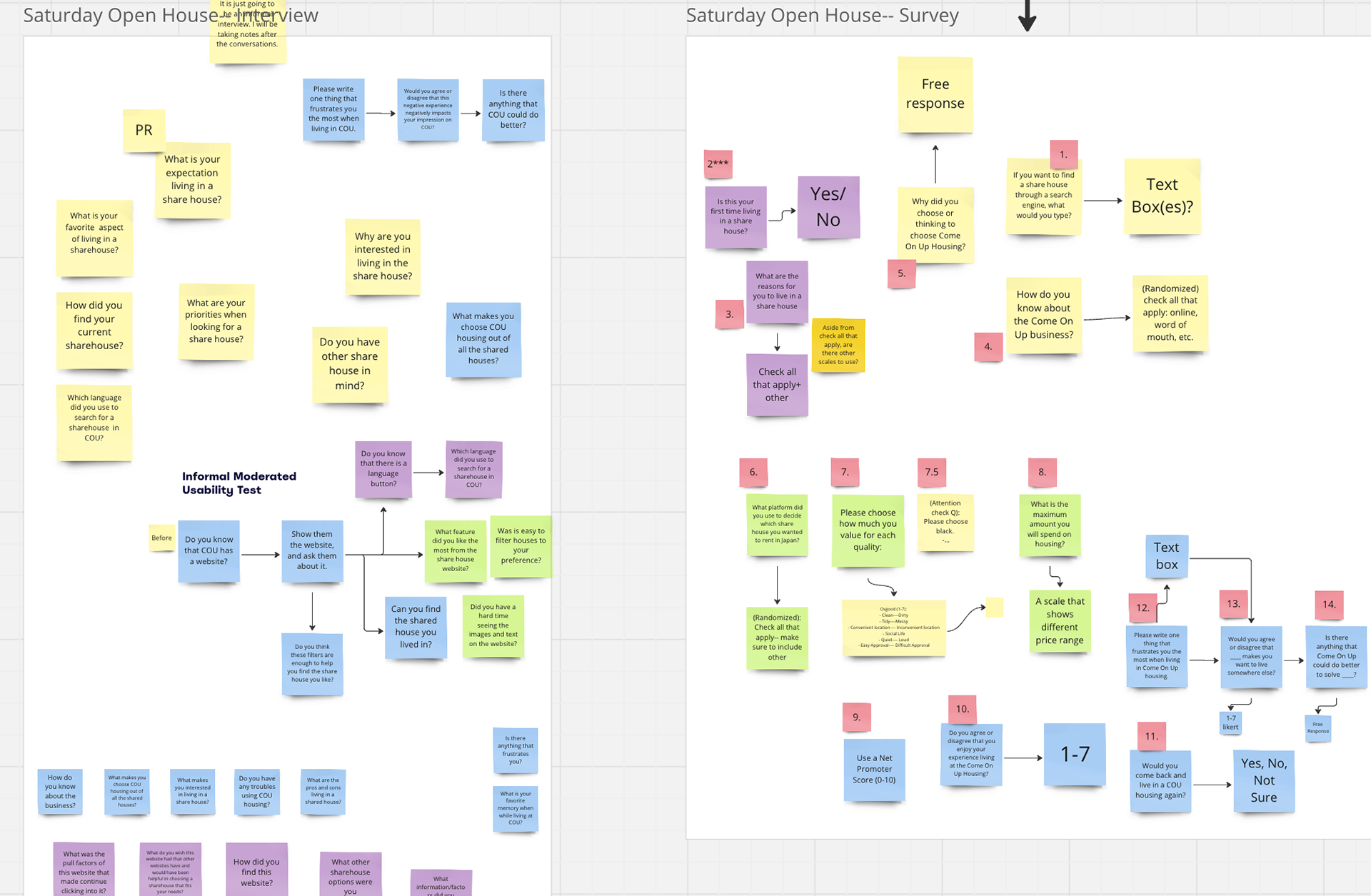
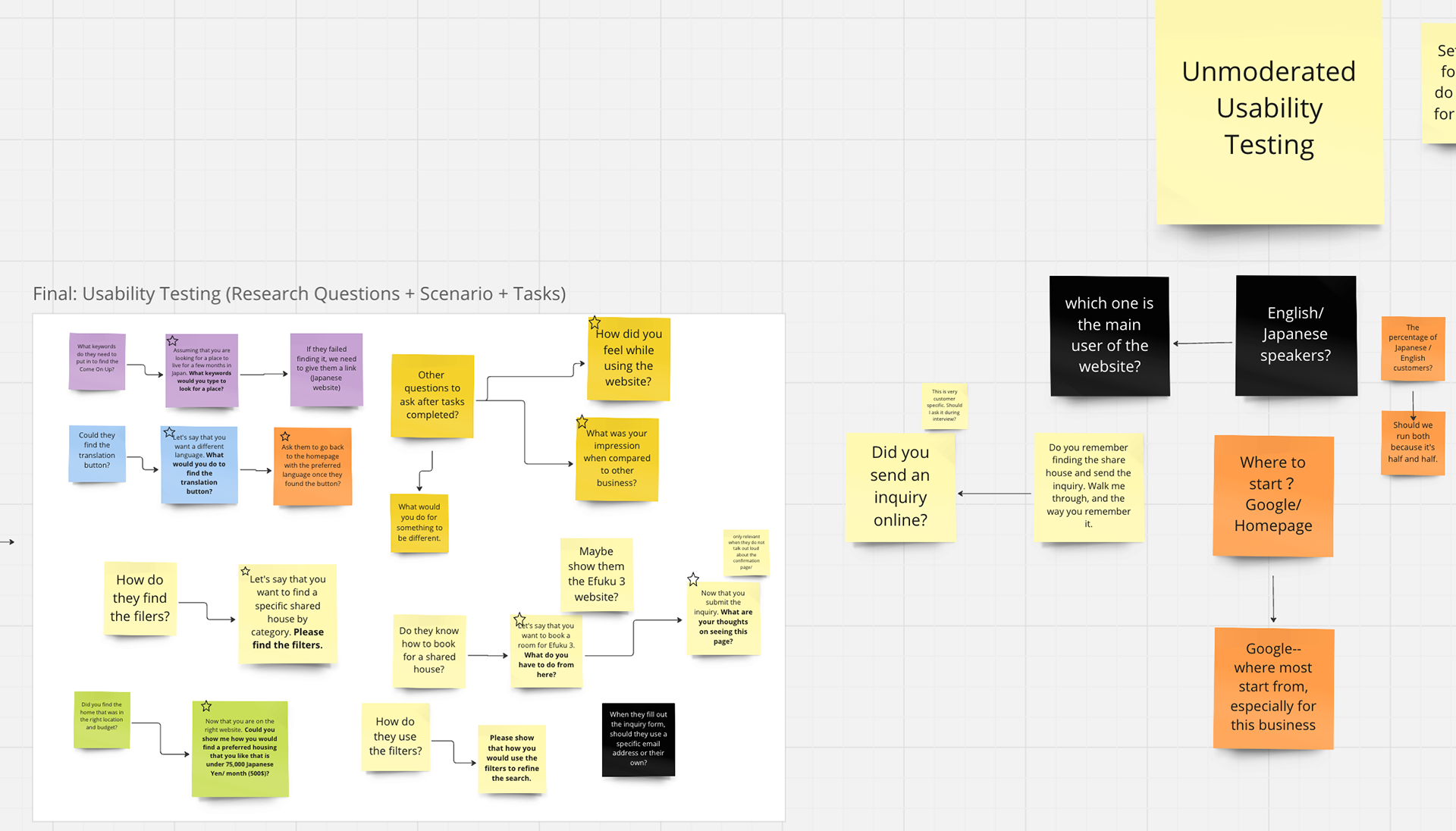
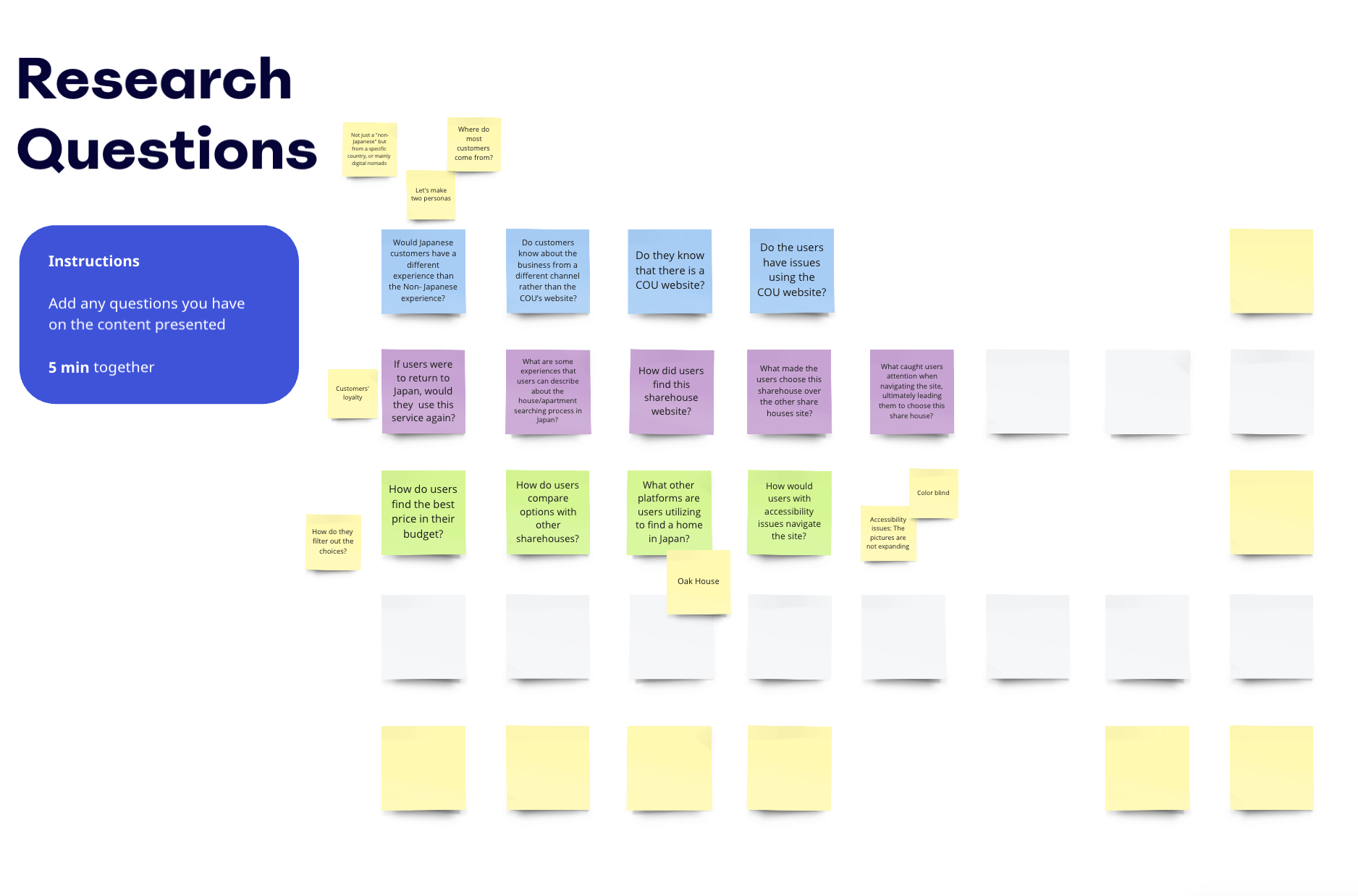
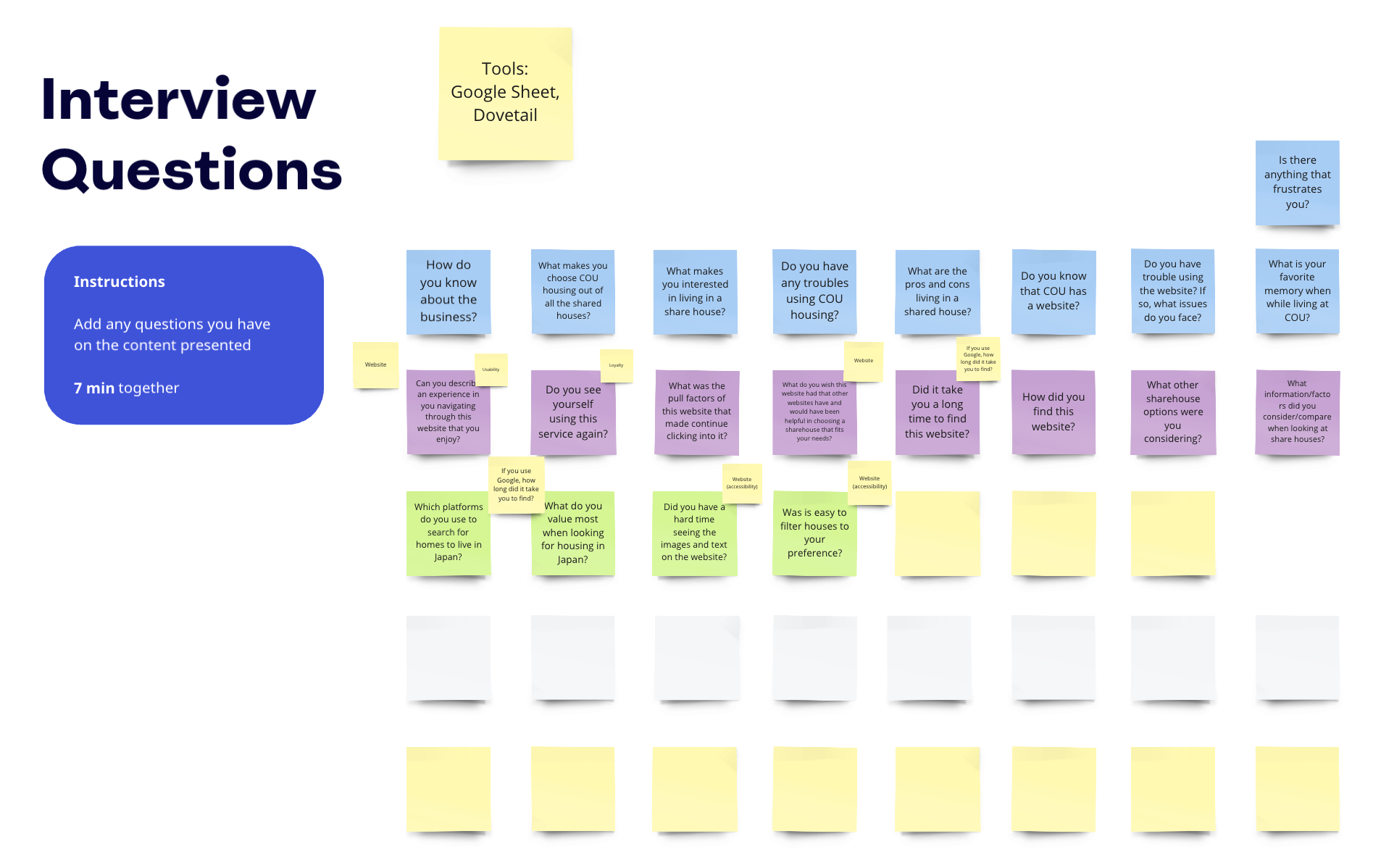
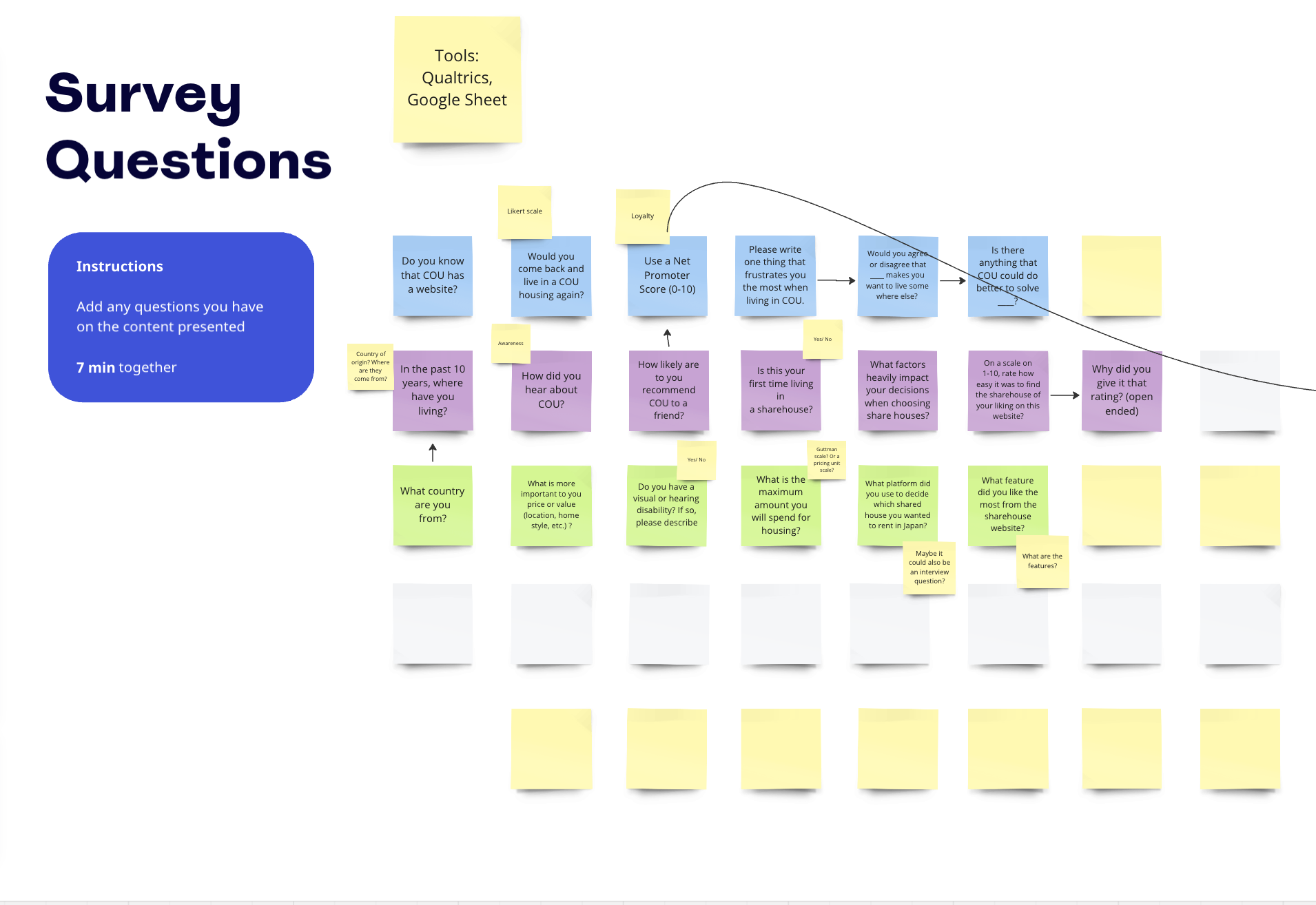
EXECUTING THE RESEARCH: UNDERSTANDING THE USER
Tool Used for Usability Testing and Interviews: Zoom
1) USABILITY TESTING & USER INTERVIEW
We used usability testing and user interviews to gather more information and to understand potential users' pain points when using the website.
Using the questions we had previously brainstormed during our planning stage, we created an interview and usability testing task guide.
Moderated usability testing
I pushed for moderated usability testing because I wanted to be able to ask questions and probe further. To understand why and what the participants thinking process were while they were navigating through the website and carrying out the given tasks.
Recruiting Participants for Usability Testing and user interviews
Selection Criteria
• How well they fit into the persona of an average user using the website
• Their language ability (English or Japanese) and living situation (in or outside Japan)
• I recruited 4 participants, 3 of whom were Japanese and currently living in Japan and who were an English speaker and lived outside of Japan
• The UX researcher on the team interviewed another 5 participants, a mix of the same demographic
Example of our moderated usability tasks/guide
ANALYZING THE RESEARCH
I analyzed the usability tests and user interviews using a thematic qualitative data coding method. Grouping the activities and thoughts into a thematic category based on the customer sale funnel helped me understand what thoughts and actions were taking place at every sale funnel phase. It also allowed me to generate a customer journey map using this data.
Tools Used: Miro Board, Dovetail, and Zoom
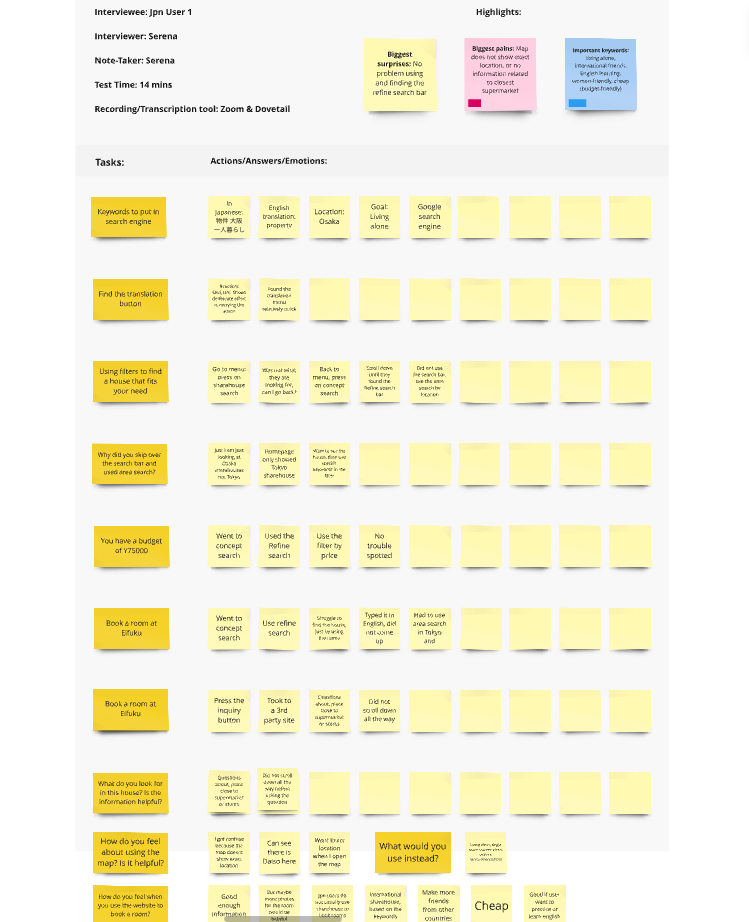
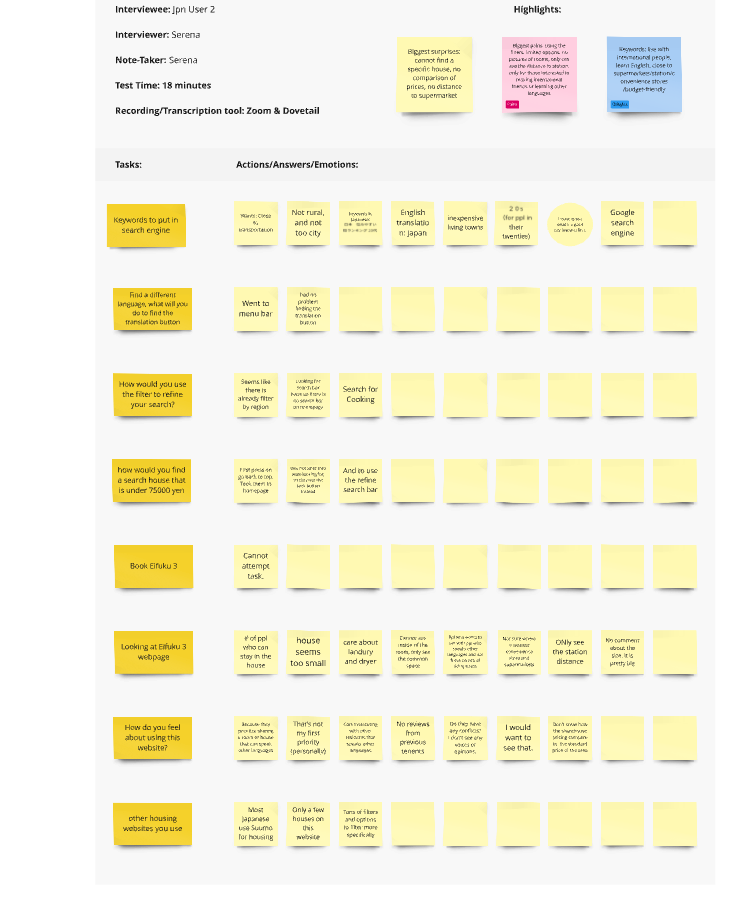
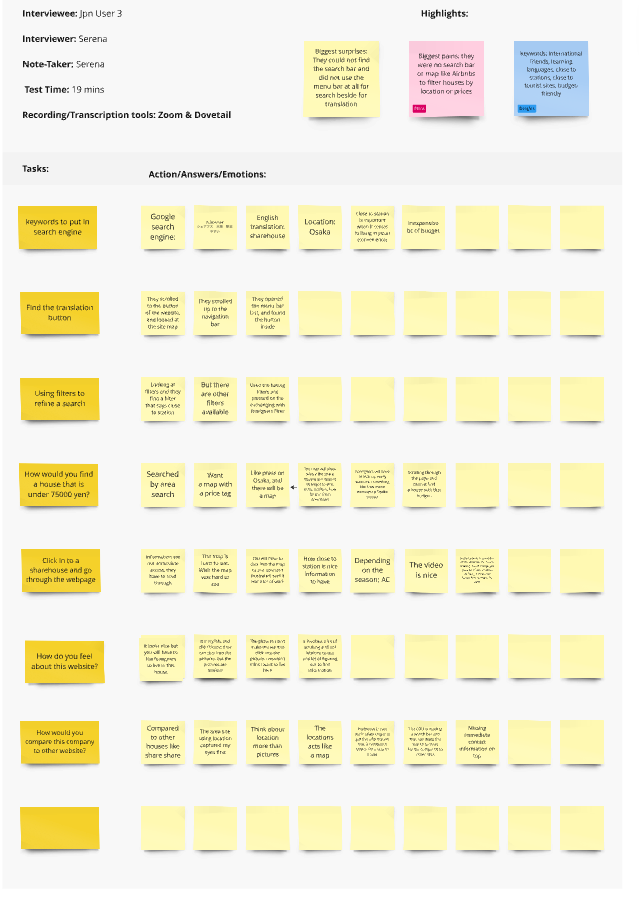
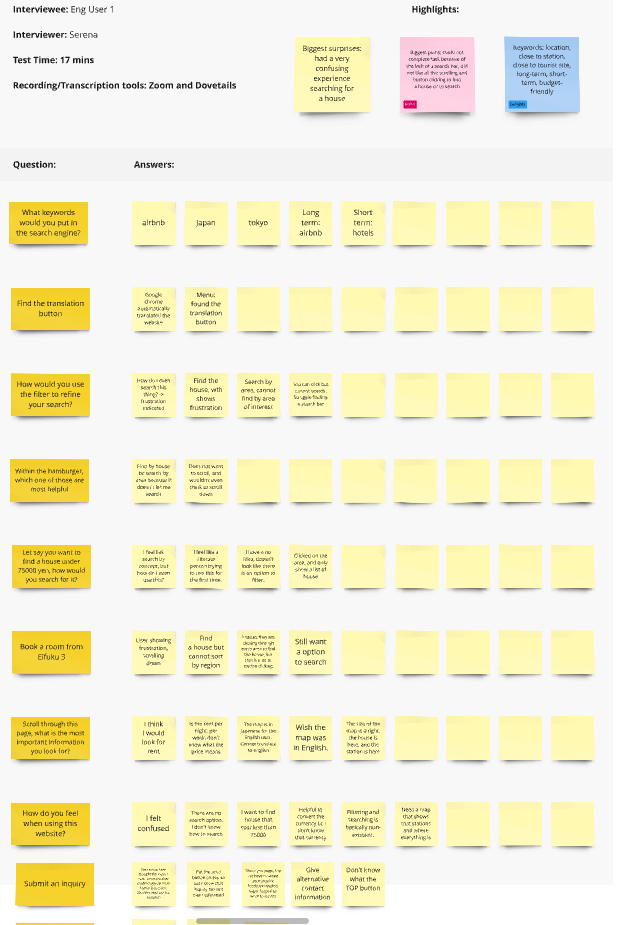
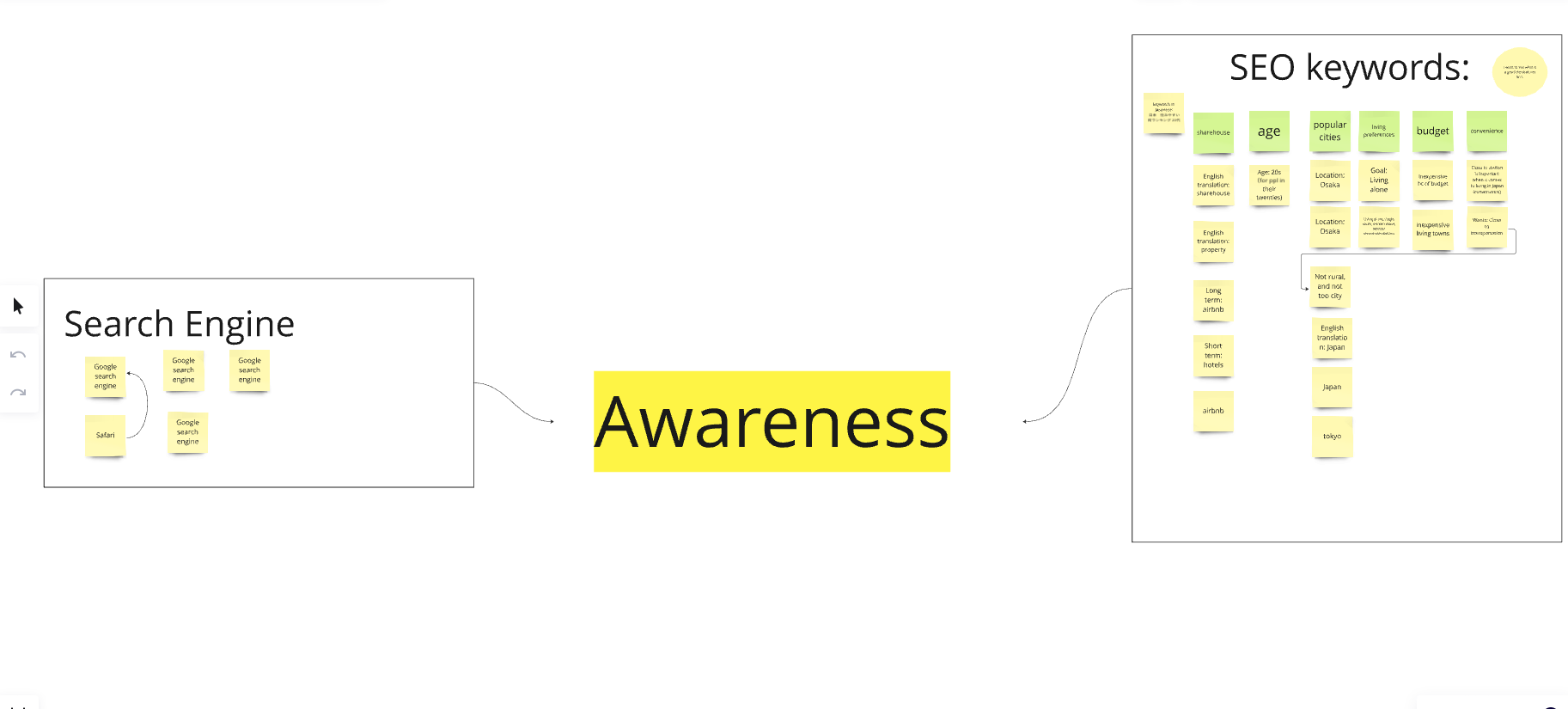
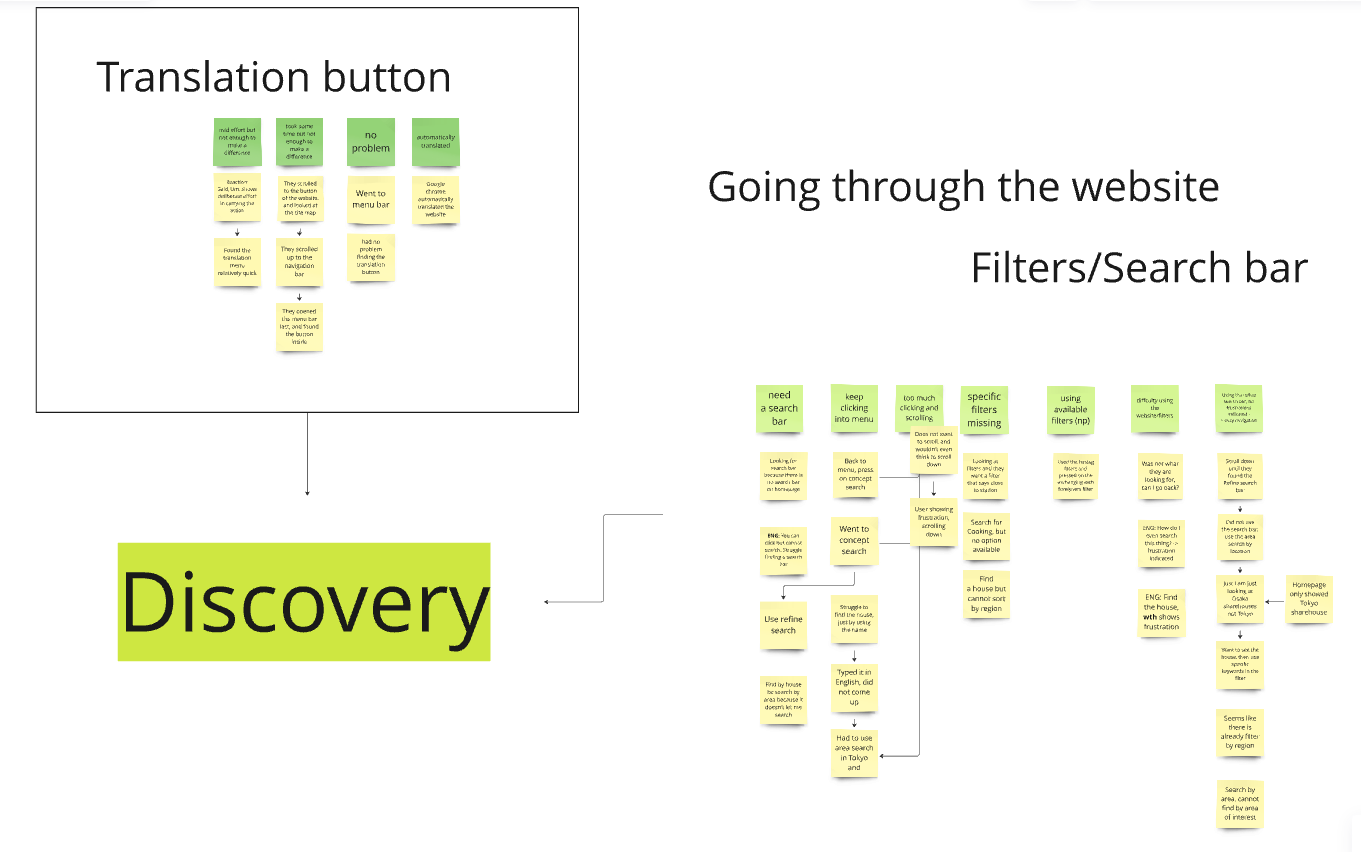
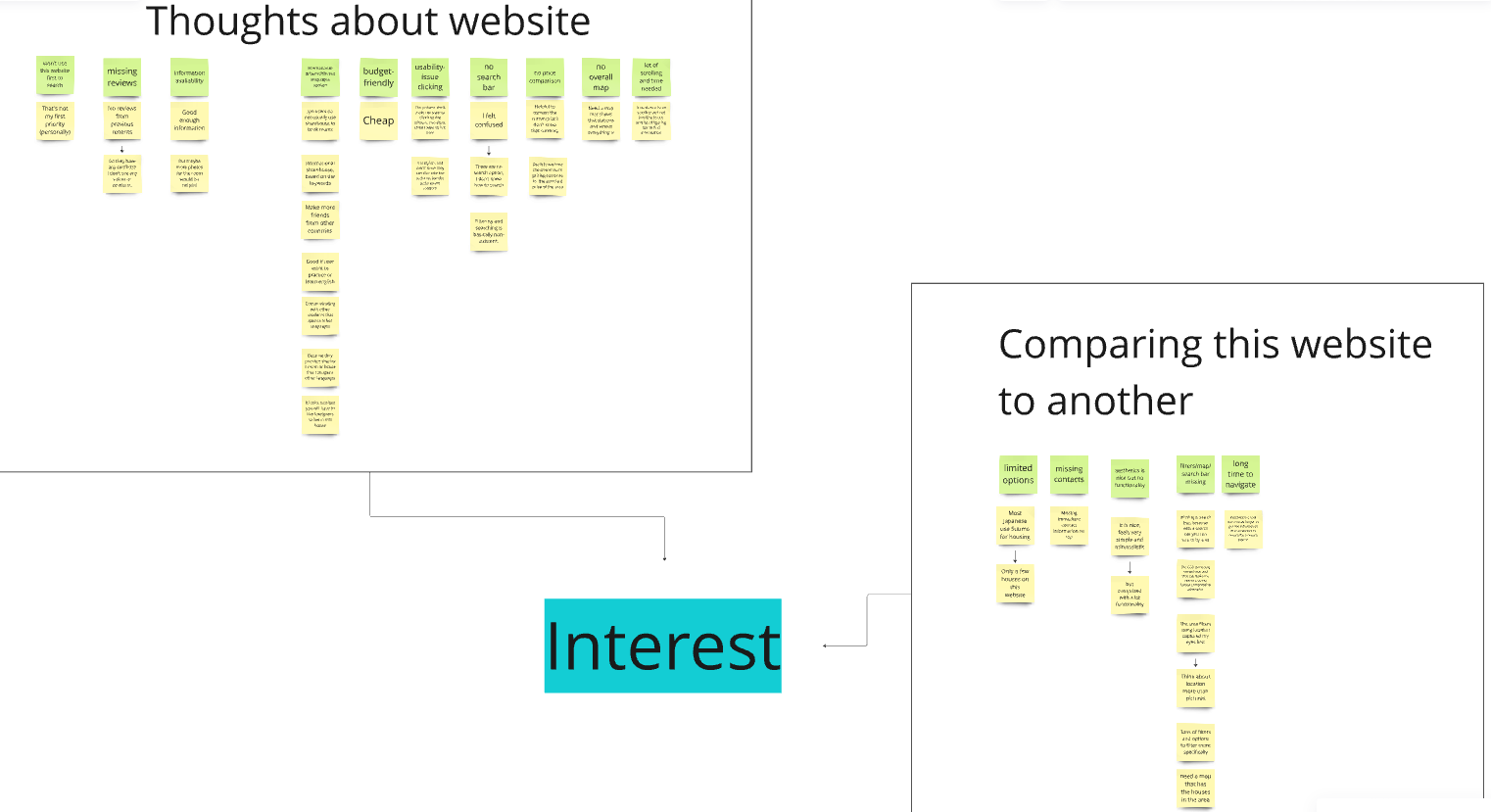
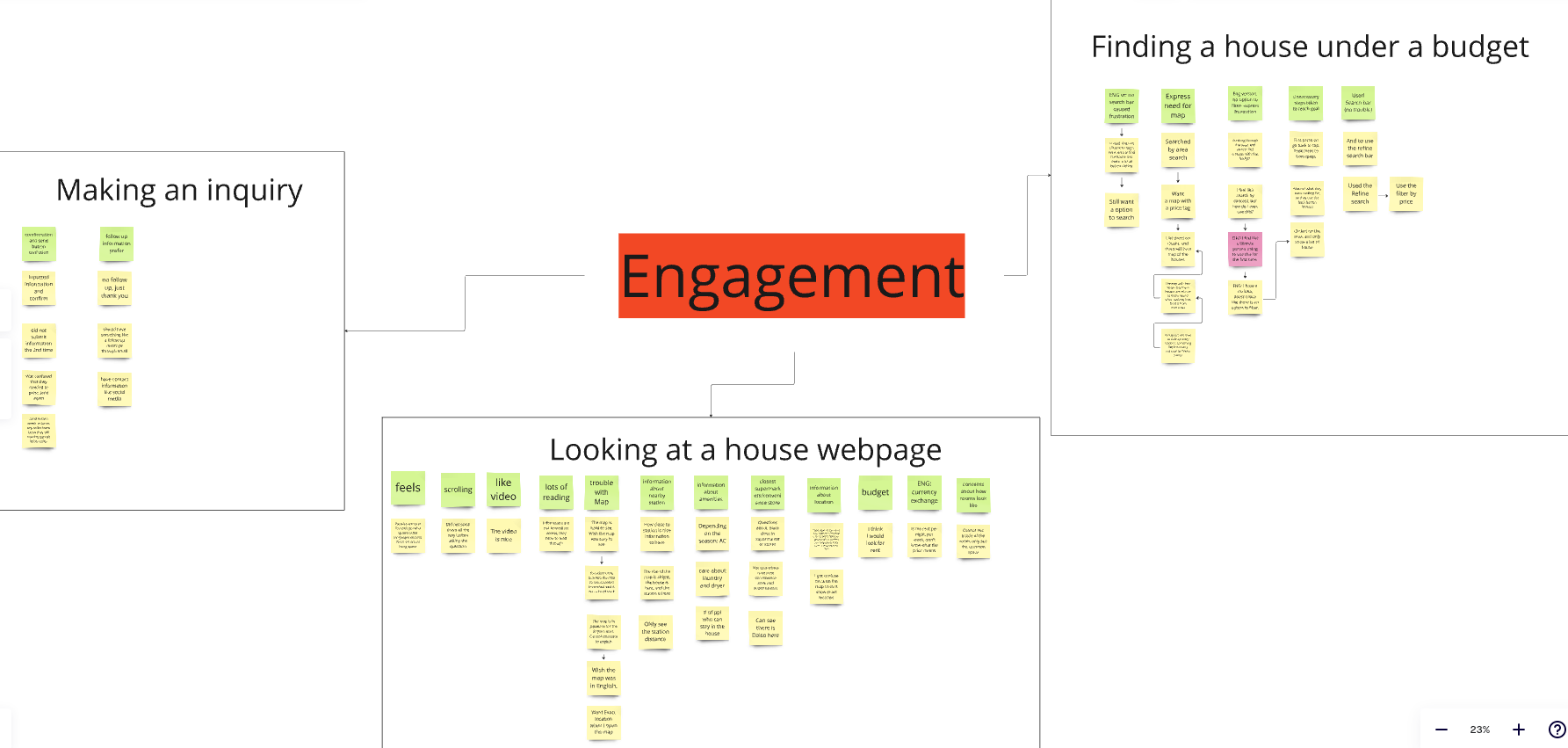
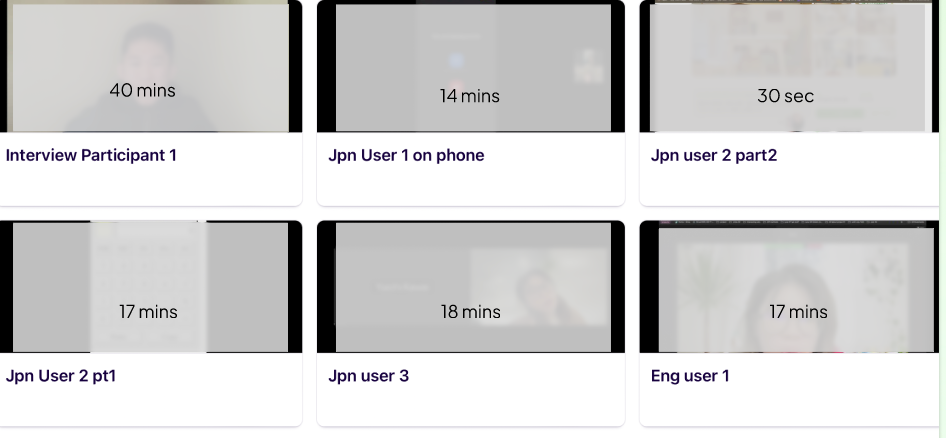
VISUALIZING THE RESEARCH
The journey map was generated using our usability testing qualitative analysis data. We structured the process by using the sales funnel as the phrase to identify the pain points of potential customers as they interact with the website from the beginning to the end journey of looking for a place to live. We also included phrases after their interaction on the website as well to show the entire customer journey process, not just their interaction with the digital component.
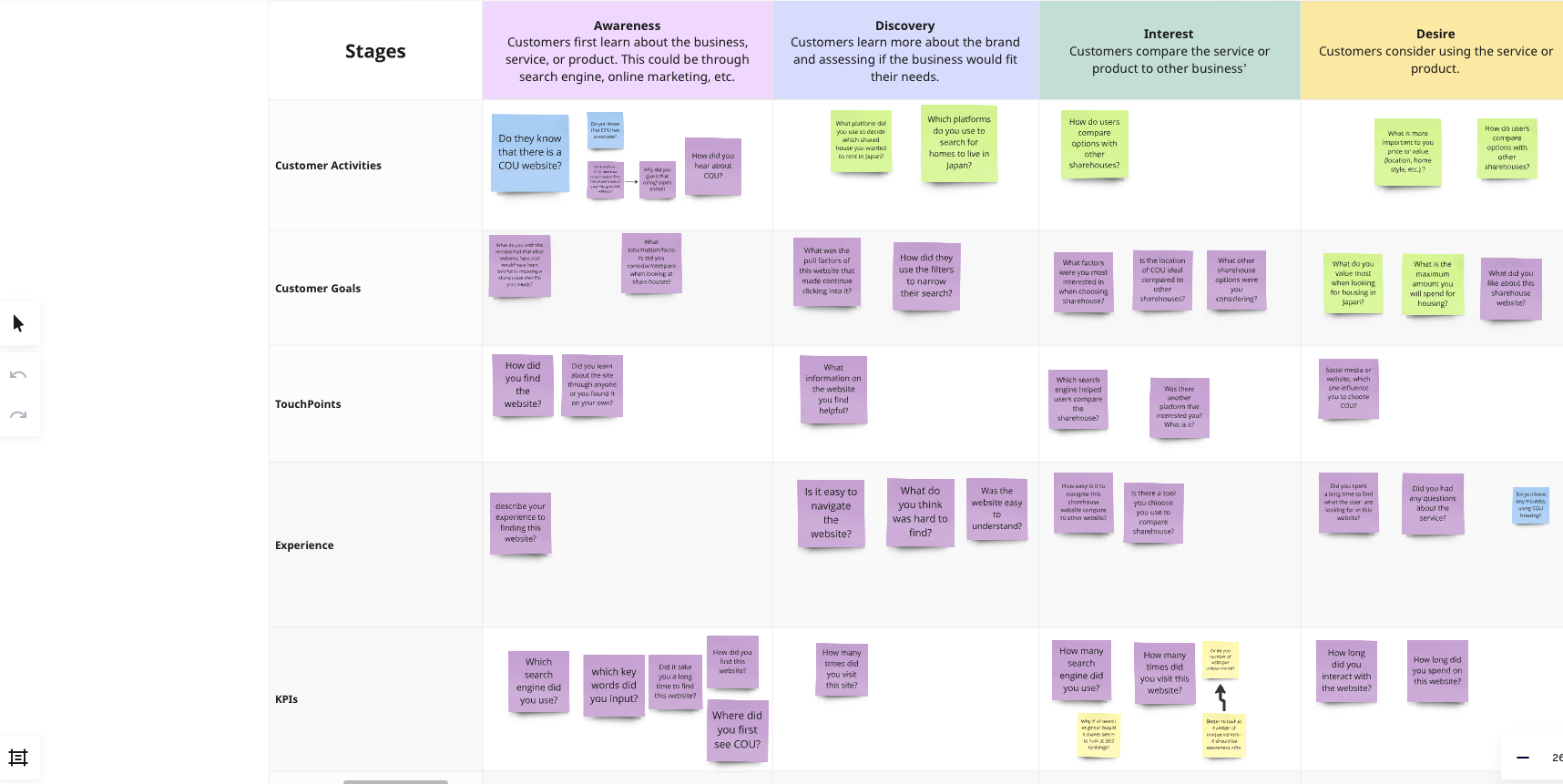
Journey Map Planning
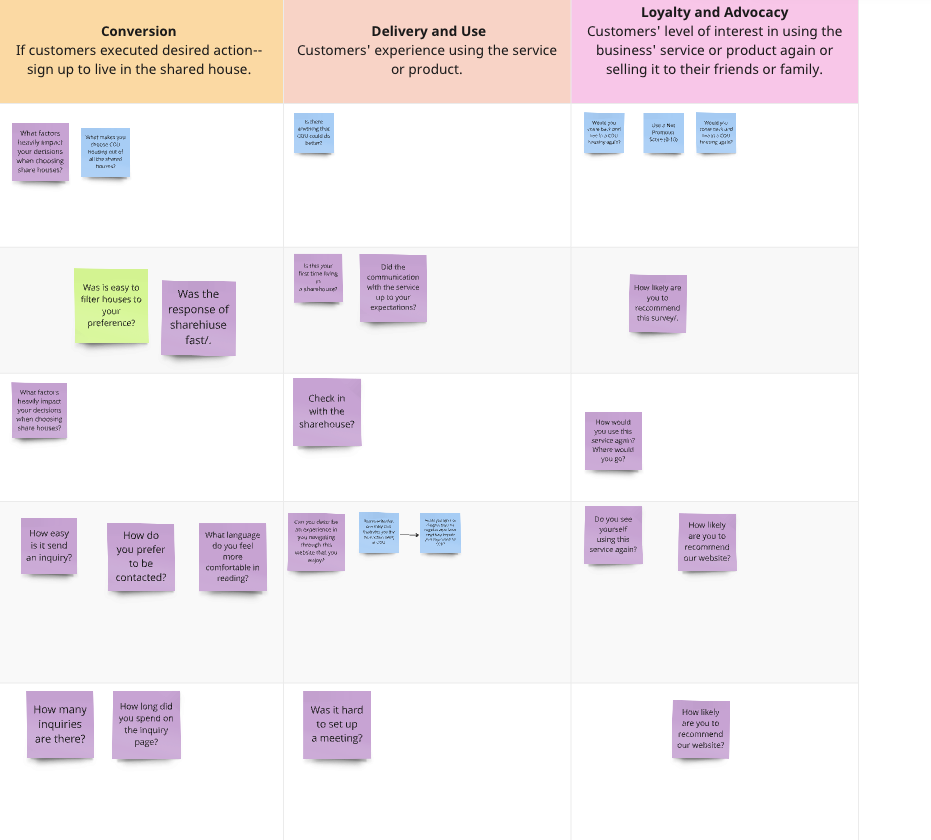
Journey Map Planning
FINAL DELIVERABLE: CUSTOMER JOURNEY MAP
I was responsible for generating the customer journey map template/format/visuals. I contributed to the creation and input of the data for the persona, research insights, experiences, and opportunities from the phrase's Awareness to Interest/Desire. My other teammate was in charge of the latter phrases.
MAJOR CHALLENGES & LESSON LEARNED
Major Challenges:
• Although my team and I identified several pain points on the company's website, time constraints limited our ability to redesign the website. We prioritized and relayed the most critical issues that needed urgent attention.
• We opted for a standalone expert review over a formal heuristic evaluation to highlight key pain points and compare them with industry best practices. This approach ensured stakeholders, who were new to UX research, could easily understand without feeling overwhelmed.
Lessons Learned:
• This project was my first experience working with external stakeholders, where I gained valuable UX research practices by shadowing my lead UX researcher.
• Throughout the project, I learned the importance of creating clear, accessible deliverables for stakeholders unfamiliar with UX research, and developed negotiation skills through market research to gain stakeholder buy-in. I honed my flexibility in working with limited design resources.
• I also strengthened my organizational skills to efficiently manage evolving tasks and stakeholder requests.
• I was later promoted from Assistant UX Researcher to UX Researcher, allowing me to take on a greater role. 
